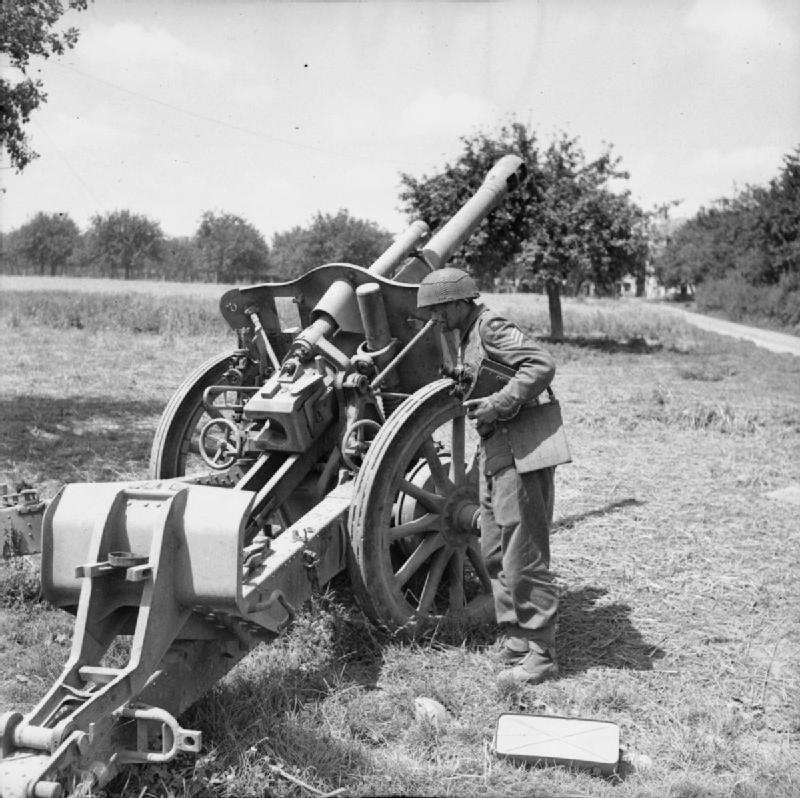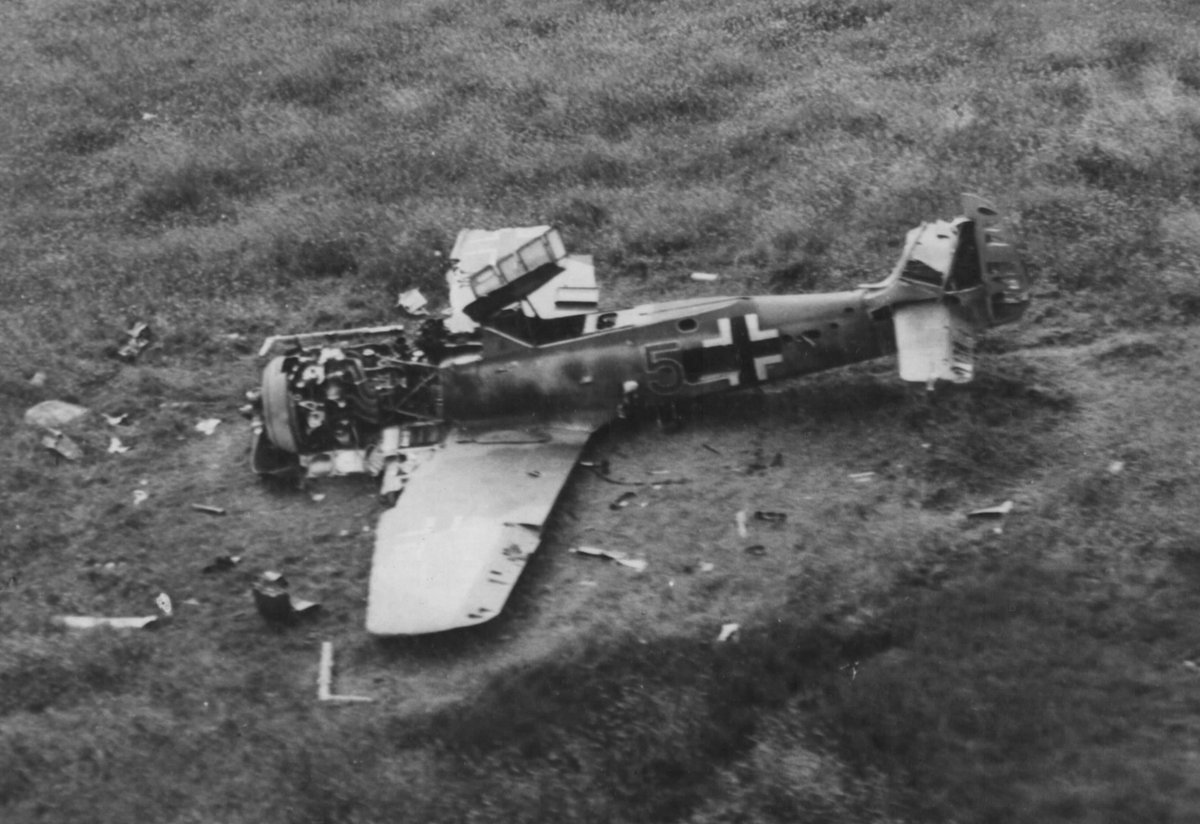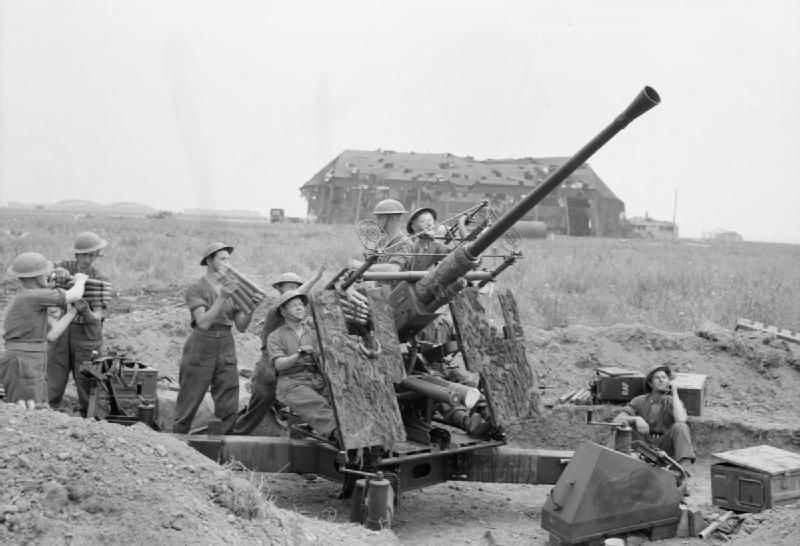
The Luftwaffe took a massive pounding over Normandy.
As the Heer's ammunition supplies interdicted by Allied tactical aircraft, Luftflotte III tasked medium bombers such as the Ju88 to hit British arty, employing night time airpower as overwhelming counter battery. /1
#WW2 #SWW



As the Heer's ammunition supplies interdicted by Allied tactical aircraft, Luftflotte III tasked medium bombers such as the Ju88 to hit British arty, employing night time airpower as overwhelming counter battery. /1
#WW2 #SWW




Army Group B was losing the battle of attrition thanks to a cocktail of Allied advances.
Superior artillery, sigint, counter-battery, AOP, survey, sound ranging, logistics, POL, and prioritisation of unloading 25 Pdr and 5.5" shells, all favoured Second Army. /2



Superior artillery, sigint, counter-battery, AOP, survey, sound ranging, logistics, POL, and prioritisation of unloading 25 Pdr and 5.5" shells, all favoured Second Army. /2




The Royal Artillery's professionalism as a technical arm of service really showed itself, as did the need to keep the guns fed - so what did Second Army do?
Build the mega Bayeux bypass, bridges, huge tank tracks dedicated for tracked vehicles to take them off other routes. /3



Build the mega Bayeux bypass, bridges, huge tank tracks dedicated for tracked vehicles to take them off other routes. /3




Paradoxically, the more static the campaign the more assets that 21st Army Group could bring to bear.* This also saw increased pressure on German arterial routes from aerial interdiction.
*Sideways look at US arty ammunition supply falling massively short. /4



*Sideways look at US arty ammunition supply falling massively short. /4




German artillery faced myriad challenges, from availability of fuzes & ammunition shortages, to having to dodge AOP pilots' watchful gaze.
Experience from the Eastern Front was oft rendered moot in high octane Normandy.
Horse drawn guns were hard to redeploy, as seen here... /5

Experience from the Eastern Front was oft rendered moot in high octane Normandy.
Horse drawn guns were hard to redeploy, as seen here... /5


Kanoniere struggled to impart their will on the British, but occasionally shined - such as during the battle for the Scottish Corridor and around Hill 112, but in time these successes would gradually fade. /6 

Thus it fell to the Luftwaffe to pick up the slack.
Luftflotte III's medium bomber strength had been sapped in their ill-advised raids against England earlier that year, whilst targeting of airfields, decreased parts availability, crew exhaustion - all played their part. /7

Luftflotte III's medium bomber strength had been sapped in their ill-advised raids against England earlier that year, whilst targeting of airfields, decreased parts availability, crew exhaustion - all played their part. /7


The most common medium bomber in Luftflotte III was the Ju 88, a good enough bomber - as seen here at @RAFMUSEUM Cosford, even if this is a night fighting variant. /8 





Fighter bombers such as FW 190 were also employed for ground attack, often in poor weather as they could guarantee the RAF and USAAF's multiple belts of defensive fighters operating deep in France would probably be absent. /9 

The Luftwaffe's night bombing proved terrifying for Allied troops on the receiving end, arguably more so than any other weapon... but they never managed to achieve critical mass and achieve devastating tactical success in flattening Allied arty parks. /10 

Just reaching Allied front lines was a serious feat. You had to break through successive fighter screens, dodge radar, then in the battle area contend with LAA, HAA and night fighters.
Tough. /11



Tough. /11




Luftflotte III's quality was also in a death spiral, not least as air crew were now poorly trained - in stark contrast to their Allied counterparts.
June was the Luftwaffe's worst month of 1944.
An additional 1,100 aircraft were raced to reinforce them.
And soon lost. /12

June was the Luftwaffe's worst month of 1944.
An additional 1,100 aircraft were raced to reinforce them.
And soon lost. /12


By July, the term "Luftwaffe" was synoymous with disappointment and failure at OKW.
Losses spiralled out of all proportion to gains with increasingly inexperienced officers promoted to command, and Eastern Front aces raced to theatre downed. /13
Losses spiralled out of all proportion to gains with increasingly inexperienced officers promoted to command, and Eastern Front aces raced to theatre downed. /13

Operational experience taught squadrons that it was folly to launch any less than twelve aircraft against Allied ground forces.
You'd just fail and bleed pointlessly for it. /14
You'd just fail and bleed pointlessly for it. /14

A litany of miserable case studies underpinned Luftwaffe experience.
Leutnant Friedrich Wachowiak of JG 52 arrived in May. He'd been acting as an instructor after achieving over a hundred kills out east.
He died on 16 July, shot down by a Spitfire. /15


Leutnant Friedrich Wachowiak of JG 52 arrived in May. He'd been acting as an instructor after achieving over a hundred kills out east.
He died on 16 July, shot down by a Spitfire. /15



These failings didn't go unnoticed by German infantry as many Landser asked, "Where the Luftwaffe is, if we are really fighting for the final decision in the West?"
So the Luftwaffe became a subject of anger, mockery and occasionally hatred for the German infantryman. /16
So the Luftwaffe became a subject of anger, mockery and occasionally hatred for the German infantryman. /16

Part of this stemmed from Goering's once grandiose promises which had pledged overwhelming support in the event of an invasion.
In truth... they certainly tried, with over 12,829 sorties in June - but lost 808 aircraft for minimal real impact.
A drop in the ocean. /17
In truth... they certainly tried, with over 12,829 sorties in June - but lost 808 aircraft for minimal real impact.
A drop in the ocean. /17

5 Jagddivision struggled to maintain a 1:1 kill ratio.
Exhausted pilots flew up to five sorties a day, straining aircraft and ground crew.
Intensive use saw aircraft failures shoot up and further hit availability. /18
Exhausted pilots flew up to five sorties a day, straining aircraft and ground crew.
Intensive use saw aircraft failures shoot up and further hit availability. /18

Ultimately the Luftwaffe failed to offer Army Group B salvation, and whilst CB via night bombing a solid idea in theory, the number of aircraft and skills of pilots was woefully insufficient to the mega-challenge at hand.
/thread
/thread

• • •
Missing some Tweet in this thread? You can try to
force a refresh
















